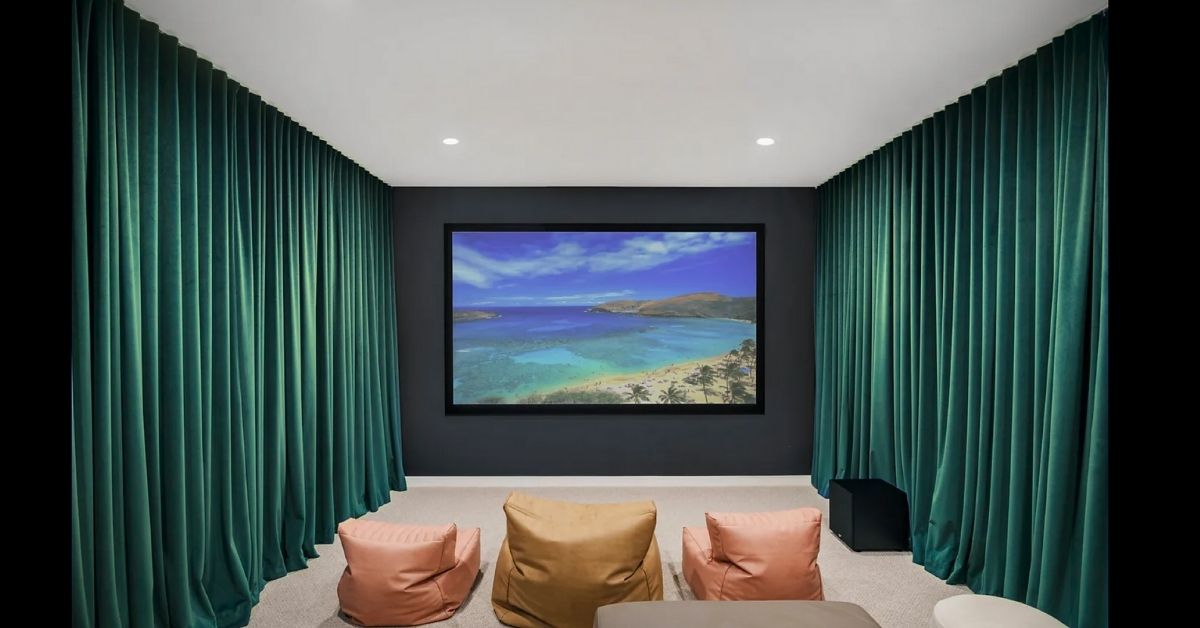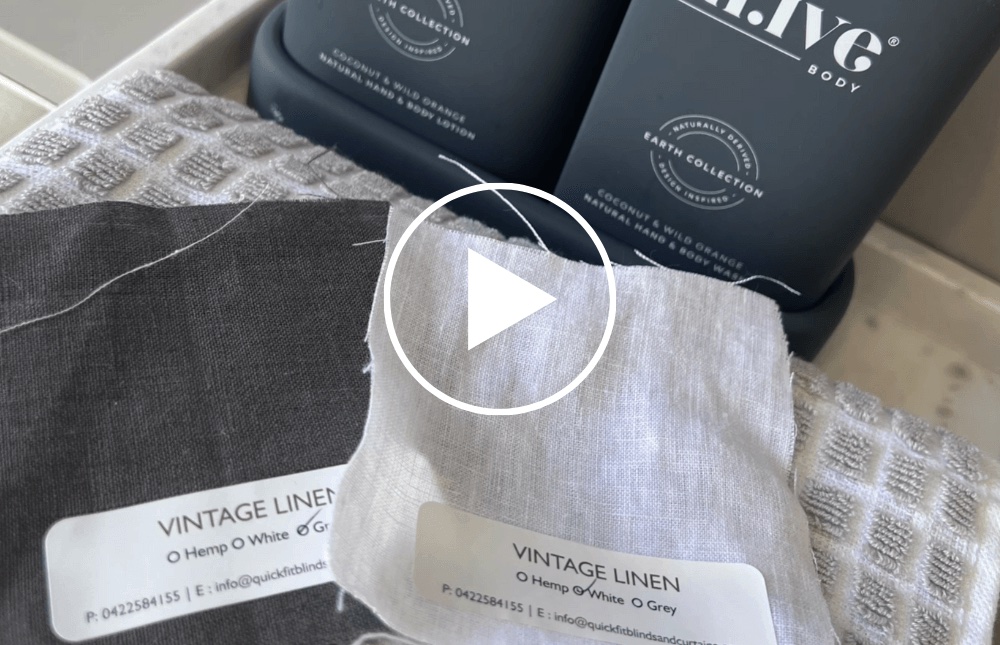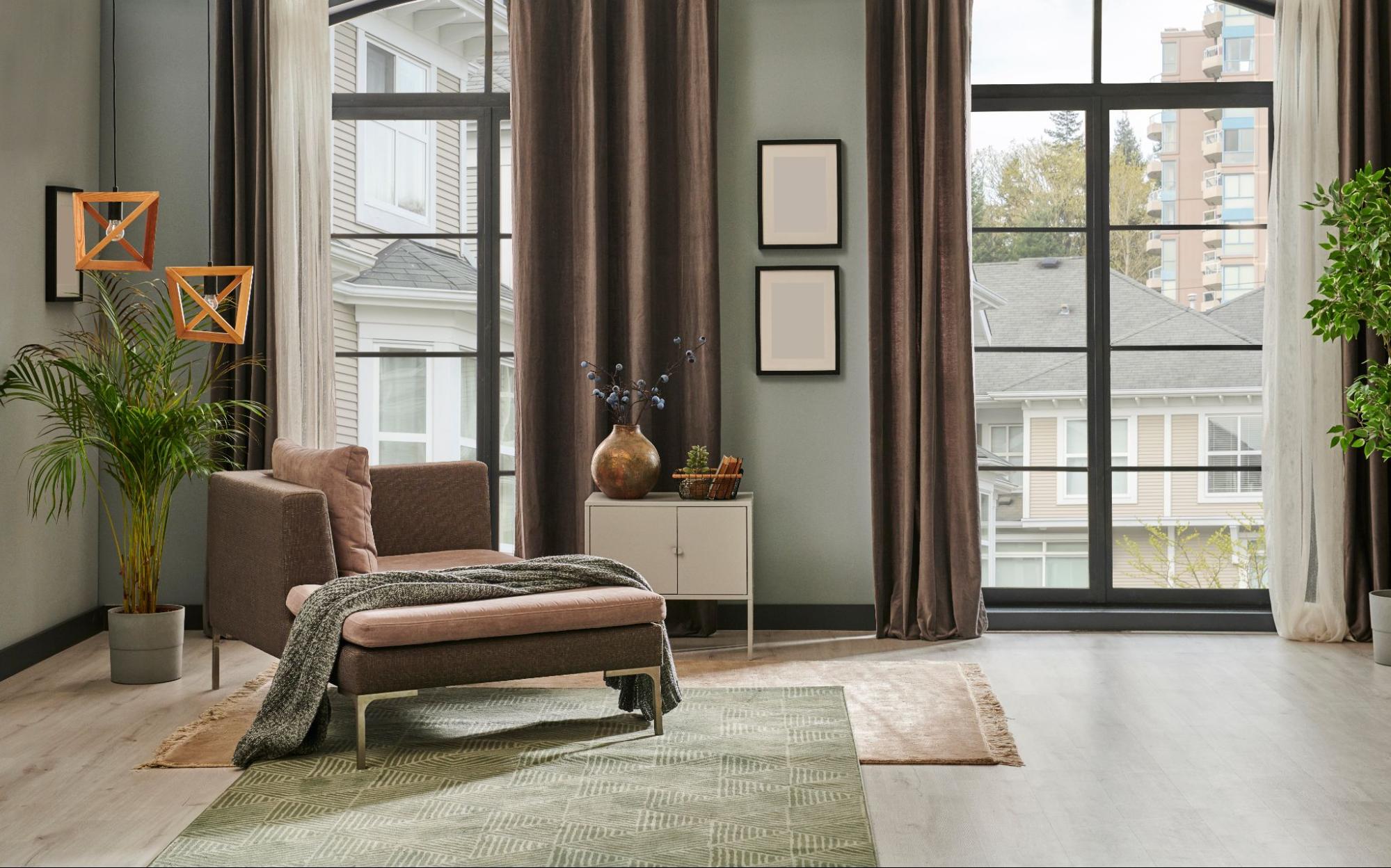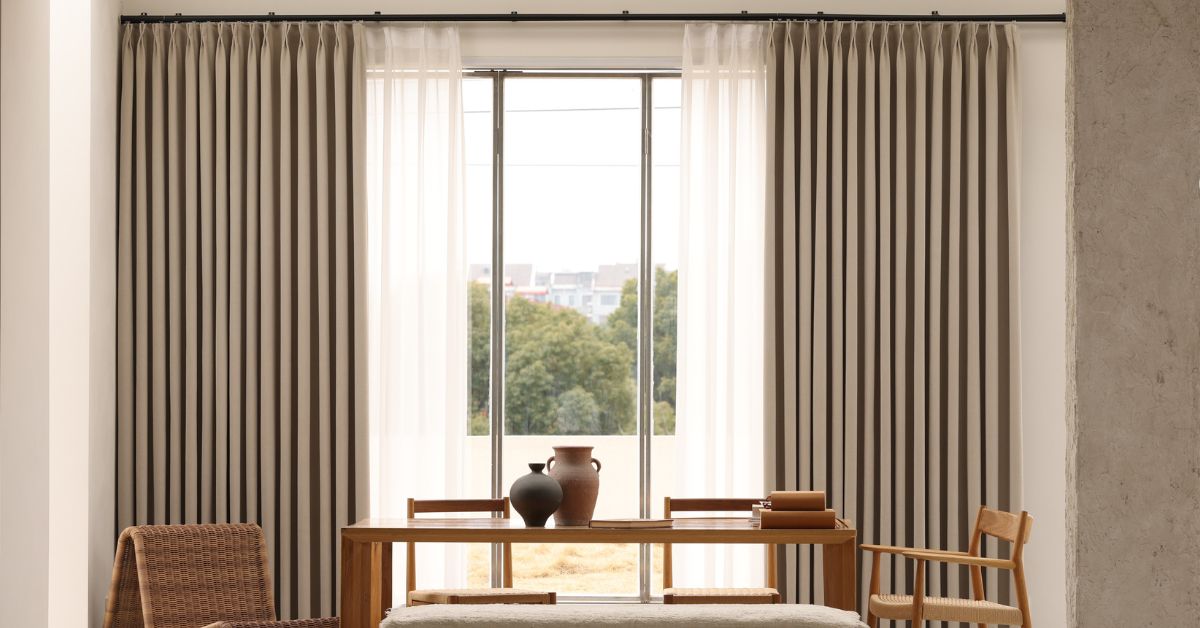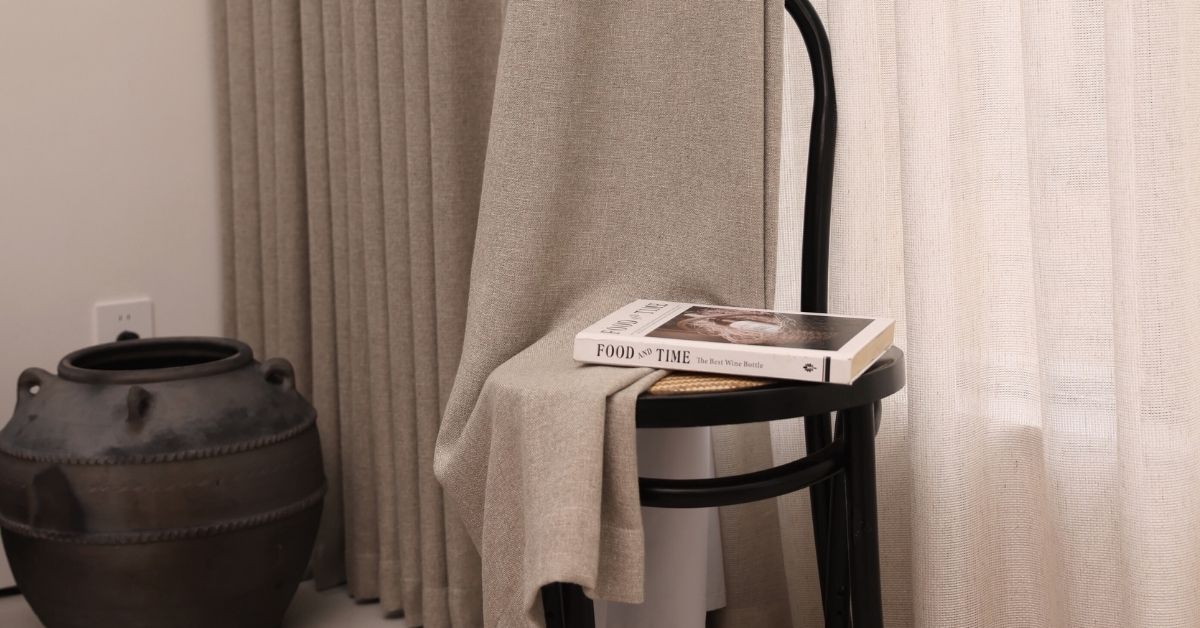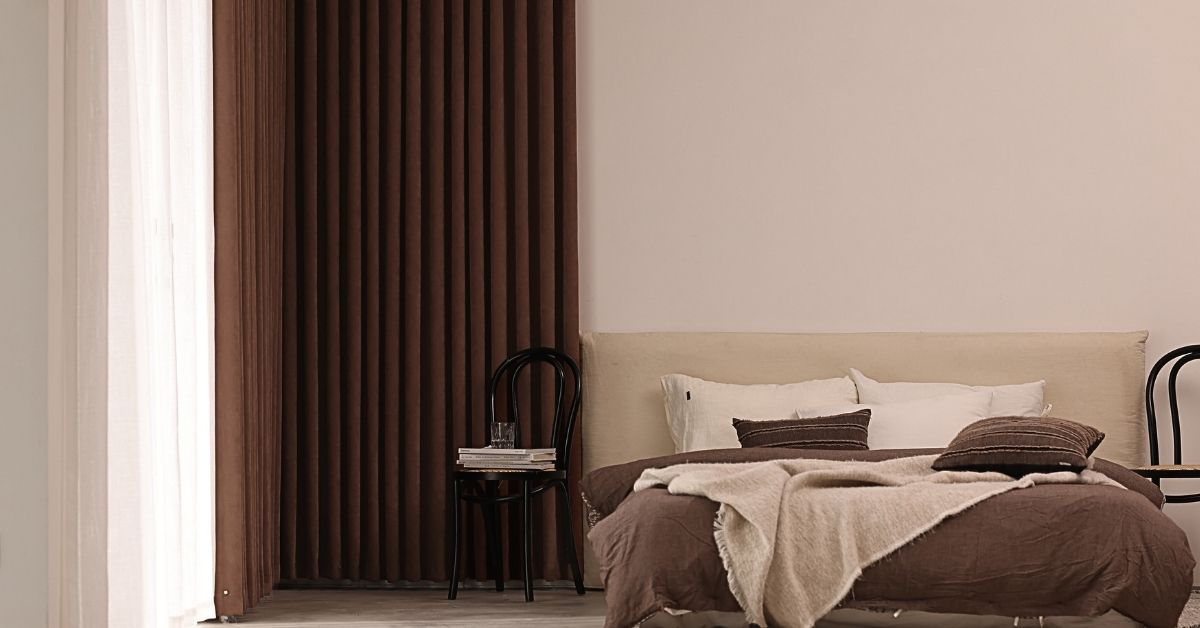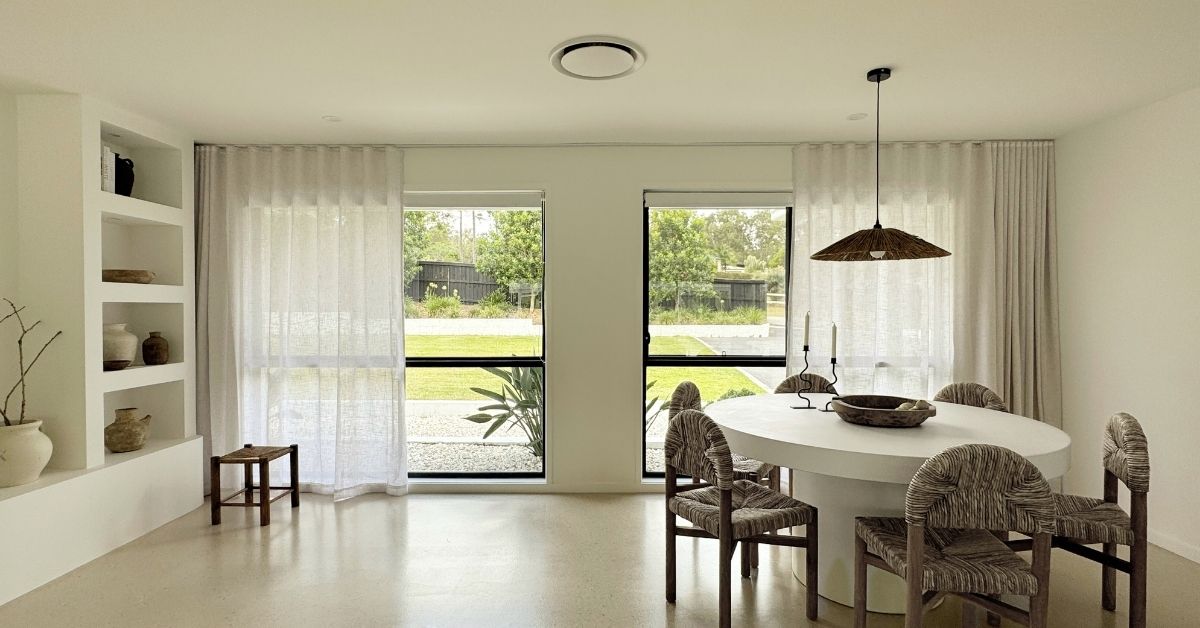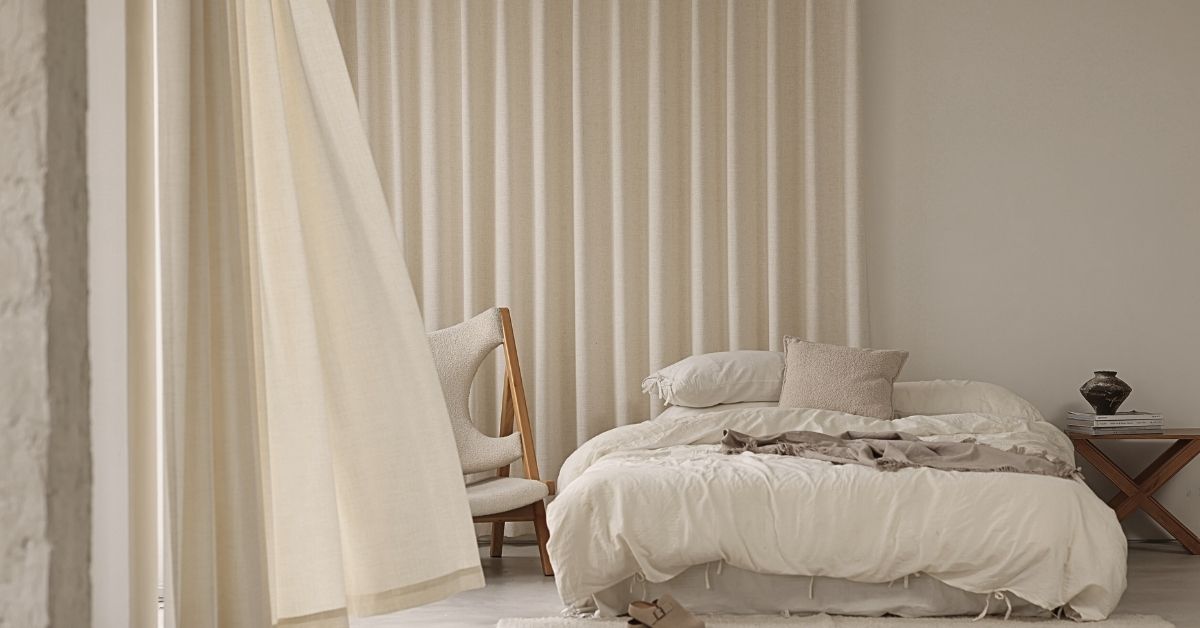When buying new curtains, most people limit themselves to installing them over framed windows. But did you know that curtains can be installed on internal windows as well? Plasterboard (also known as drywall or gib board), may look solid enough, but it won't hold a screw, and if you mount a curtain rod improperly, you'll end up with a sagging curtain and a hole to patch. However, with the right tools and the right technique, even heavy fabrics like velvet can hang safely and securely on internal windows without a wooden border.
How To Hang Heavy Curtains
In today’s blog, we break down the three main methods of hanging heavy curtains on plasterboard: curtain rod anchors, longer screws and center support brackets. The materials you need to install curtains varies depending on the style you choose. However, for the majority of curtain styles, you can use the following techniques when installing them on plasterboard.
Here's how to hang your heavy curtains on plasterboard or drywall:
3. Install additional brackets
1. Use longer screws or nails
No matter which technique you decide to go with, the first step when hanging curtains or blinds on drywall is use a stud detector to ensure there is a stud behind the part of the wall you want to drill into, otherwise the weight of the curtains could tear the plaster.
Typically, curtain rods are held up by brackets which are installed into the wall using nails and screws. However, when it comes to hanging heavy curtains on plasterboard, these brackets may need a bit more support in order to stay secure. The best way to do this is to install the brackets with longer screws or longer nails. The extra length helps distribute the weight of the curtains further into the plasterboard, making it the joint sturdier than the screws used in traditional window installation. However, be sure to choose your screws or nails carefully, as you don’t want to keep drilling (and causing more wall damage) to find the right fit.

2. Add wall anchors
As you know, attaching the brackets to a stud behind the plasterboard is the best way to ensure heavy curtains are secure, but this isn’t always possible. Studs are only found every 40-60 centimetres, so it’s unlikely there would be one everywhere you want to put a bracket- that’s where wall anchors come in.
Wall anchors are available at most hardware stores and come in a variety of shapes and materials. Before making a purchase, be sure to check they’re rated for the amount of weight you’ll be putting on this fixture and it’s appropriate for wherever it’s installed (i.e. wall anchors instead of ceiling anchors).
Once you've attached your first anchor, it's a good idea to double-check the position of the second one to make sure they’re aligned correctly and avoid the need to install them twice. Simply place one end of the rod in the bracket and hold the other end against the mark while you check the level with a spirit level.
3. Install additional brackets
If you’re able to attach your curtain rod to a stud, then adding a centre support bracket is another way to stablise heavy window treatments and prevent them from sagging. Not sure if you need an extra bracket? Keep in mind that curtain rods typically require a support bracket every 70-90 centimetres, so if your window extends longer than 1.5 metres, you’ll need at least two support brackets.
When both brackets are secure, place the curtain rod on them and adjust its length so the ends are flush with the outsides of the brackets. Use a measuring tape to find the centre, then hook the third bracket on the rod, place it against the wall and secure with screws. Too easy!
The Final Word
We hope that after reading this guide, you'll be able to have your heavy curtains hanging securely fastened. Of course, if you still have any questions about how to install curtains on plasterboard or how to install curtains in general, visit our website to find out more. Alternatively, our friendly staff are always here to help, simply go to our contact page to get in touch.
Enjoy this guide? Take a look at our other curtain guides including:

